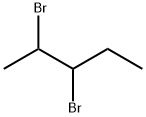Types of Bonds:
- there are three main types of bonds
1.
Ionic (metal - non-metal)
-
electrons (will now be abbreviated to e.) are transferred from metal to non-metal
2.
Covalent (non-metal - non-metal)
-
e. are shared between non-metals
3.
Metallic (metal)
- holds
pure metals together by electrostatic attraction
Electronegativity:
- electronegativity (will now be abbreviated to "en.") is a measurement of an atom's attraction for e. in a bond
(NOTE: there are
NO UNITS for electronegativity
)
- Fluorine = 4.0
- Chlorine = 3.0
- Cesium = 0.8
- atoms with greater en. attract e. more
-
Polar Covalent bonds form an
unequal sharing of e.
-
Non-Polar Covalent bonds form from
equal sharing
Bonds:
- the type of bond formed can be produced by looking at the
difference in en. of elements
- if (en.
> 1.7), it is an
Ionic bond
- if (en. < 1.7), it is a
Polar Covalent bond
- if (en. = 0), it is a
Non-Polar Covalent bond
EXAMPLES:
1. Predict the type of bond formed.
F - F
Identify the electronegativity of each element: The electronegativity of Fluorine is 3.98.
Find the difference by forming and solving an equation: 3.98 - 3.98 = 0.00
State what type of bond was formed: Because the electronegavitity of this bond is 0.00, we may conclude that this is a Non-Polar Covalent bond.
2. Predict the type of bond formed.
Mg - S
Identify the electronegativity of each element: The electronegativity of Magnesium is 1.31, and the electronegativity of Sulphur is 2.58.
Find the difference by forming and solving an equation: 1.31 - 2.58 = -1.27 = 1.27
(NOTE: find and use the absolute value)
State what type of bond was formed: Because the electronegativity of this bond is 1.27, we may conclude that this is a Polar Covalent bond
3. Predict what time of bond was formed. Then identify the positive and negative sides of the following bond.
Ca - Se
Identify the electronegativity of each element: The electronegativity of Calcium is 1, and the electronegativity of Selenium is 2.55.
Find the difference by forming and solving an equation: 1 - 2.55 = -1.55 = 1.55
State what type of bond was formed: Because the electronegativity of this bond is 1.55, we may conclude that this is a Polar Covalent bond.
State which side is negative, and which side is positive: The electronegativity of Selenium is greater than the electronegativity of Calcium. From this, we may conclude that Selenium is the negative side and Calcium is the positive side because the electron will be attracted to Selenium.
Represent this with a diagram: δ + Ca - Se - δ
















